Comprehensive Guide to Construction Waste Clearance in Paddington
Understanding Construction Waste
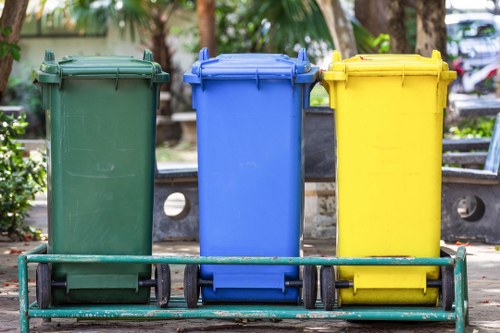
Construction projects, whether large or small, generate a significant amount of waste. This waste includes materials like concrete, wood, metal, and drywall, which can accumulate quickly on-site. Proper management and clearance of construction waste are crucial not only for maintaining a clean and safe work environment but also for adhering to local regulations and promoting environmental sustainability.
In Paddington, a vibrant suburb known for its historical architecture and bustling construction activity, effective construction waste clearance is essential. The area’s dense urban setting requires meticulous planning and efficient waste management solutions to minimize disruptions and environmental impact.
Failing to manage construction waste properly can lead to numerous issues, including blocked access routes, increased project costs, and potential legal repercussions. Moreover, improper disposal of construction materials can harm the environment, contributing to pollution and wasting valuable resources.
Importance of Proper Waste Clearance
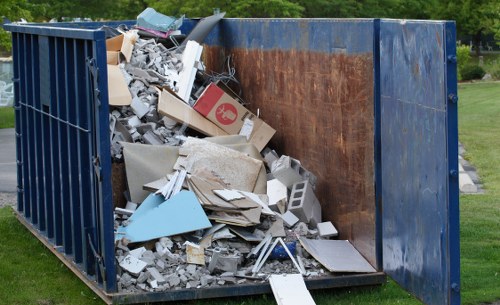
Efficient waste clearance plays a pivotal role in the success of any construction project. It ensures that the workspace remains organized, which in turn boosts productivity and safety. Workers can perform their tasks more effectively when the site is free from unnecessary clutter and hazards.
Environmental Responsibility: Proper disposal and recycling of construction waste help reduce the ecological footprint of construction activities. By segregating recyclable materials and ensuring they are processed appropriately, construction companies can contribute to sustainability efforts and comply with environmental regulations.
Cost Efficiency: Managing waste effectively can lead to significant cost savings. By reducing the volume of waste sent to landfills, companies can lower disposal fees. Additionally, recycling certain materials can generate revenue, further offsetting project expenses.
Types of Construction Waste
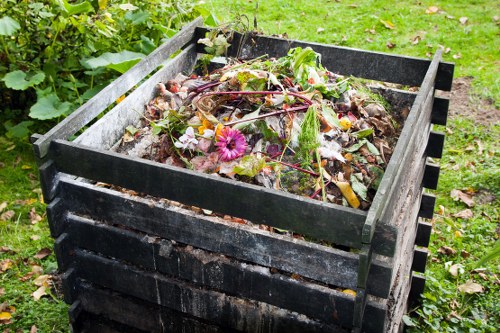
Construction waste in Paddington typically includes a variety of materials:
- Concrete and Masonry: Debris from demolished structures or excess concrete from mixing processes.
- Wood and Timber: Offcuts, pallets, and packaging materials.
- Metals: Scrap metal from construction frameworks and fixtures.
- Drywall and Plaster: Excess plasterboard and related materials.
- Plastics and Packaging: Wrapping materials, pipes, and other plastic components.
Each type of waste requires specific handling and disposal methods to ensure compliance with local regulations and to promote recycling where possible.
Regulations and Compliance in Paddington
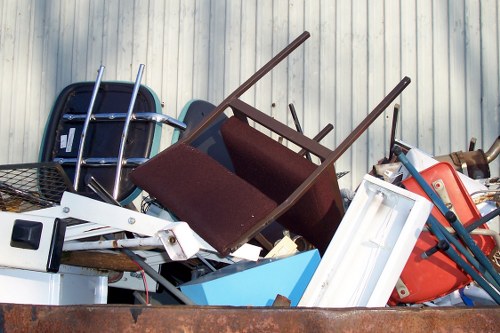
Paddinton has stringent regulations governing construction waste management. Compliance is not only a legal obligation but also a best practice for responsible construction.
Key regulations include:
- Waste Segregation: Mandatory separation of waste into categories such as recyclable, non-recyclable, and hazardous materials.
- Disposal Permits: Obtaining the necessary permits for waste transportation and disposal.
- Recycling Requirements: Specific quotas and guidelines for recycling certain materials like metals and concrete.
- Record Keeping: Maintaining detailed records of waste generation, transportation, and disposal.
Non-compliance can result in hefty fines, project delays, and damage to a company’s reputation. Therefore, staying informed about the latest regulations and ensuring adherence is crucial for construction businesses in Paddington.
Effective Waste Clearance Strategies
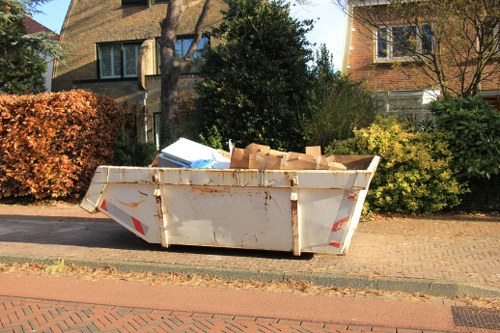
Implementing effective waste clearance strategies can significantly enhance the efficiency and sustainability of construction projects. Here are some best practices:
- Waste Minimization: Plan projects to reduce waste generation from the outset. This includes accurate material estimation and efficient procurement practices.
- On-site Sorting: Establish designated areas for different types of waste to streamline the separation process.
- Recycling Partnerships: Collaborate with local recycling facilities to ensure that recyclable materials are processed correctly.
- Regular Audits: Conduct periodic audits to monitor waste generation and disposal practices, identifying areas for improvement.
- Employee Training: Educate workers about the importance of waste management and train them in proper disposal techniques.
By adopting these strategies, construction sites in Paddington can achieve a higher level of organization, reduce environmental impact, and comply with local regulations.
Choosing the Right Waste Clearance Service
Selecting a reliable construction waste clearance service is critical for the smooth execution of any project. When choosing a service provider in Paddington, consider the following factors:
- Experience and Expertise: Look for companies with a proven track record in handling construction waste in similar projects.
- Compliance with Regulations: Ensure that the service provider adheres to all local waste management laws and regulations.
- Range of Services: Choose a provider that offers comprehensive services, including waste collection, sorting, recycling, and disposal.
- Environmental Commitment: Opt for companies that prioritize sustainability and have robust recycling programs.
- Customer Reviews: Check testimonials and reviews to gauge the reliability and quality of the service provider.
Partnering with the right waste clearance service can enhance project efficiency, reduce costs, and support environmental sustainability.
Benefits of Professional Waste Clearance
Engaging professional construction waste clearance services in Paddington offers numerous benefits:
- Time Savings: Professionals handle waste removal efficiently, allowing your team to focus on core construction activities.
- Cost-Effectiveness: Proper waste management can lower overall project costs by reducing disposal fees and preventing potential fines.
- Safety Enhancement: Removing waste promptly reduces the risk of accidents and injuries on the construction site.
- Environmental Impact: Professional services ensure that waste is disposed of responsibly, minimizing environmental harm.
- Regulatory Compliance: Experts stay updated on the latest regulations, ensuring your project remains compliant.
These benefits collectively contribute to the successful and sustainable completion of construction projects in Paddington.
Innovative Waste Management Technologies
Advancements in waste management technologies are transforming how construction waste is handled. Some of the innovative solutions include:
- Automated Sorting Systems: Utilize AI and robotics to efficiently sort materials, increasing recycling rates and reducing manual labor.
- Waste Tracking Software: Implement digital tools to monitor waste generation, transportation, and disposal in real-time.
- Recycling Machinery: Invest in equipment that can process and recycle different types of construction materials on-site.
- Green Bins and Containers: Use specialized containers that facilitate easier sorting and handling of various waste types.
- Mobile Apps: Leverage applications that connect construction sites with waste clearance services, streamlining scheduling and communication.
Incorporating these technologies can enhance the efficiency, accuracy, and sustainability of waste management practices in construction projects.
Cost Implications of Waste Clearance
Effective waste clearance has a direct impact on the overall budget of construction projects. Understanding the cost implications can help in better planning and resource allocation.
- Disposal Fees: Costs associated with transporting and disposing of waste materials, which can vary based on the volume and type of waste.
- Recycling Benefits: Some materials can be recycled for a fee, potentially offsetting disposal costs.
- Operational Costs: Expenses related to managing waste on-site, including labor and equipment.
- Regulatory Fines: Non-compliance can lead to hefty fines, increasing the project’s financial burden.
- Long-Term Savings: Investing in effective waste management can reduce long-term costs by preventing environmental damage and enhancing project efficiency.
Balancing these factors is essential for maintaining the financial health of construction projects while ensuring responsible waste management.
Environmental Impact of Construction Waste
The environmental consequences of construction waste are profound. Improper disposal contributes to pollution, resource depletion, and ecosystem disruption.
Pollution: Landfilled construction waste can leach harmful chemicals into the soil and groundwater, contaminating local ecosystems. Additionally, burning waste materials releases toxic fumes into the atmosphere, exacerbating air pollution.
Resource Depletion: Construction waste often includes valuable materials like metals and timber. Discarding these resources leads to unnecessary extraction of raw materials, intensifying environmental degradation.
Ecosystem Disruption: Accumulated waste can disrupt local habitats, affecting wildlife and biodiversity. Maintaining a clean environment is essential for the health of both human and natural communities.
Recycling and Reuse Opportunities
Recycling and reusing construction waste present significant opportunities for sustainability and cost savings.
- Material Recycling: Metals, plastics, and concrete can be recycled and repurposed, reducing the demand for new raw materials.
- Reuse of Materials: Timber, bricks, and fixtures from demolished structures can be refurbished and used in new projects, preserving their value and reducing waste.
- Innovative Applications: Exploring new ways to utilize waste materials, such as using recycled plastics for insulation or concrete aggregates.
- Circular Economy: Promoting a circular economy where materials are continuously reused and recycled, minimizing waste generation.
- Collaboration with Recycling Facilities: Partnering with local recycling centers to ensure efficient processing and utilization of recyclable materials.
Embracing recycling and reuse not only benefits the environment but also enhances the sustainability and economic viability of construction projects.
Challenges in Construction Waste Management
Despite the benefits, managing construction waste comes with its set of challenges:
- Limited Space: Urban areas like Paddington have limited space for waste storage and disposal, making efficient management crucial.
- High Costs: Advanced waste management solutions and recycling processes can be expensive, posing budgetary constraints.
- Regulatory Complexity: Navigating the myriad of local regulations and compliance requirements can be daunting.
- Lack of Awareness: Some construction firms may lack the knowledge or motivation to implement effective waste management practices.
- Logistical Issues: Transporting waste materials, especially bulky or hazardous ones, requires careful planning and resources.
Addressing these challenges involves strategic planning, investment in technology, and fostering a culture of sustainability within the construction industry.
Future Trends in Construction Waste Clearance
The landscape of construction waste management is evolving, with several emerging trends shaping its future:
- Smart Waste Management: Integration of IoT devices and data analytics to monitor and optimize waste management processes in real-time.
- Sustainable Materials: Increasing use of eco-friendly and recyclable materials in construction projects to reduce waste generation.
- Modular Construction: Prefabricated building components that minimize on-site waste through precise manufacturing processes.
- 3D Printing: Utilizing 3D printing technology to create construction materials on-demand, reducing excess waste.
- Enhanced Recycling Technologies: Development of more efficient and versatile recycling methods to handle a wider range of construction materials.
Staying abreast of these trends will enable construction companies in Paddington to adopt innovative waste management practices, enhancing sustainability and operational efficiency.
Case Studies: Successful Waste Clearance in Paddington
Examining successful case studies can provide valuable insights into effective construction waste clearance strategies.
Case Study 1: EcoBuild Project
The EcoBuild Project in Paddington implemented a comprehensive waste management plan that emphasized recycling and reuse. By segregating waste on-site and partnering with local recycling facilities, they achieved a recycling rate of over 70%, significantly reducing their environmental impact and disposal costs.
Case Study 2: Riverside Development
The Riverside Development faced challenges due to limited space for waste storage. They adopted a just-in-time waste removal approach, ensuring that waste was continuously transported off-site, maintaining a clutter-free workspace and complying with local regulations.
Tips for Effective Waste Management
Implementing the following tips can enhance waste management practices in construction projects:
- Plan Ahead: Develop a waste management plan during the project planning phase to anticipate and address potential waste issues.
- Educate Your Team: Train workers on proper waste segregation and disposal techniques to ensure consistency and effectiveness.
- Invest in Quality Bins: Use clearly labeled and appropriate bins for different types of waste to facilitate easy sorting.
- Monitor Waste Generation: Keep track of the amount and types of waste generated to identify areas for reduction and improvement.
- Engage with Stakeholders: Collaborate with suppliers, contractors, and recycling facilities to ensure a seamless waste management process.
By following these tips, construction projects in Paddington can achieve more efficient and sustainable waste clearance.
Conclusion
Construction waste clearance is a critical component of any construction project, especially in dynamic and densely populated areas like Paddington. Effective waste management not only ensures compliance with regulations but also promotes environmental sustainability and operational efficiency.
By understanding the types of construction waste, adhering to local regulations, implementing effective clearance strategies, and embracing innovative technologies, construction companies can significantly reduce their environmental impact and enhance their project outcomes.
Contact us today to learn more about how our construction waste clearance services in Paddington can help your project succeed.